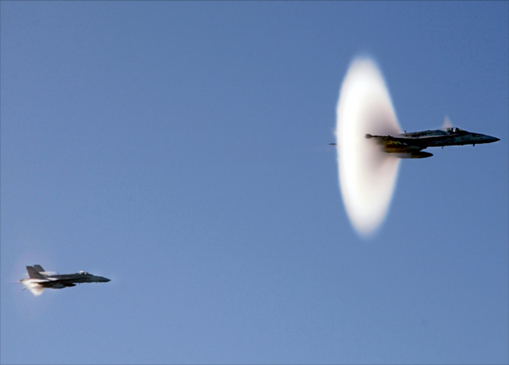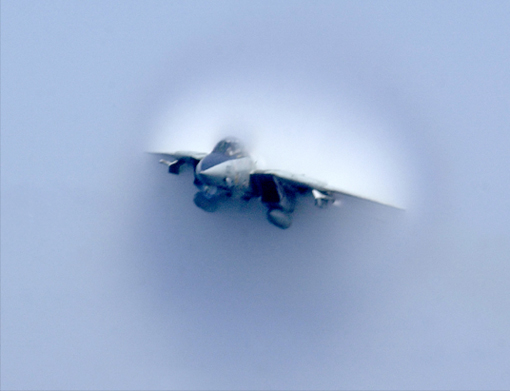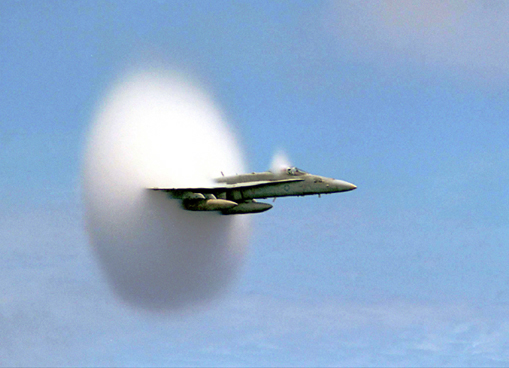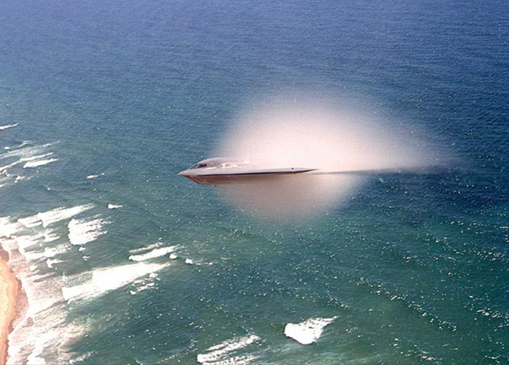Breaking the Sound Barrier with an Aircraft
Military aircraft routinely accelerate to speeds greater than the local sound speed. Historically, this was referred to as "breaking the sound barrier". The passage from subsonic to supersonic speeds is accompanied by some unusual phenomena which lie in the realm of "nonlinear" mechanical events - events involving some degree of chaos.

One of the extraordinary sights associated with this supersonic transition is the production of a sudden visible vapor cloud around the aircraft. The report of the photographers is that they snap the shutter when they hear the sonic boom, which certainly associates the cloud with the breaking of the sound barrier. But the photo of the B-2 below, which is slightly subsonic, blurs that distinction. It seems safe to say that the phenomenon is associated with the extraordinary conditions very near the speed of sound. Mark Cramer describes this condensation effect in terms of the Prandtl-Glauert Singularity. In this phenomenon, the non-linear or "chaotic" effects amplify all pressure perturbations, leading to some regions of anomalously high and low pressure. If the associated volumes cannot quickly change, then the ideal gas law suggests that the temperature in the low pressure regions must drop, leading to condensation of the water vapor present. This general description probably applies, even though in the presence of condensation, the gases are not exactly "ideal".
The photo credit is Photographer's Mate Airman Chris M. Valdez, Navy NewsStand -- Eye on the Fleet Photo Gallery ( http://www.news.navy.mil/view_photos.asp, 040129-N-0905V-024).

| Load video of F-14 |


This photo of the B-2 Spirit Stealth Bomber, which does not break the sound barrier, shows that the extraordinary cloud effect is not exactly tied to the breaking of the sound barrier. The aircraft was completing a mission over the Pacific Ocean.
This photo is credited to Bobbi Garcia, a civilian aerial photographer working for Rohmann Services in support of the Air Force Flight Test Center (AFFTC). It appeared in the December 30, 2002 issue of Aviation Week and Space Technology.
General references for the top three photos and many others: United States Navy (USN, http://www.navy.mil ), United States Department of Defense (DoD, http://www.DefenseLink.mil or http://www.dod.gov), Government of the United States of America (USA).Traveling wave concepts
Sound propagation concepts
Reference
Cramer
| HyperPhysics***** Sound | R Nave |